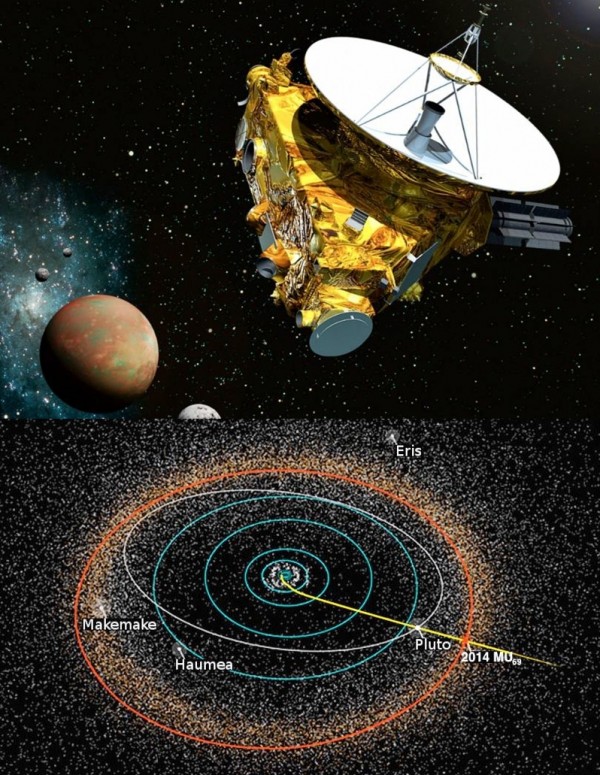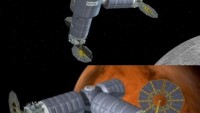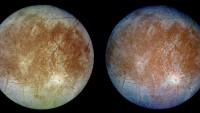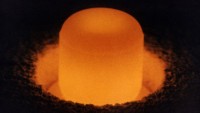New Horizons' Bid to Explore 2014 MU69 in Kuiper Belt Endangered by NASA
| Arthur Dominic Villasanta | | May 22, 2016 03:23 AM EDT |
(Photo : NASA) New Horizons and the location of 2014 MU69 in the Kuiper Belt.
After making history with its breathtaking photos of Pluto in July 2015, the intrepid New Horizons spacecraft will again make history with its upcoming flyby of 2014 MU69, an icy rock in the Kuiper Belt unchanged since the solar system's formation 4.6 billion years ago.
The flyby should take place on New Year's Eve 2018. At the time of the encounter, MU69 will be 4.2 billion miles away from Earth.
Like Us on Facebook
New Horizons will jet past MU69 at 45,931 feet per second. It will use its imaging instruments, RALPH and LORRI, and UV imaging spectrometer, Alice, to collect data about MU69's surface, brightness and size. This new data will help scientists complete the puzzle of the Kuiper Belt, which consists of the last unknown objects in the solar system. It will take a one-way signal from New Horizons over six hours to reach the Earth.
Scientists describe MU69 as a "cold, classical object" as are many of the unknown icy objects that inhabit the Kuiper Belt (also called the Edgeworth-Kuiper Belt). This belt located from 4.5 to 7.4 billion kilometers away from the sun consists primarily of small bodies that are remnants from the solar system's formation.
Most Kuiper Belt Objects (KBOs) consist of frozen volatiles (or "ices") such as water, methane and ammonia.
"The Kuiper Belt in general, and the cold classical objects especially, are the most primordial objects," said Simon Porter, post-doctoral researcher on the New Horizons mission. "They were never pushed around by the giant planets; they're pretty much where they formed and haven't been disturbed except for occasionally bumping into each other."
New Horizons' encounter with MU69, which is about a billion miles away from Pluto, will be humankind's first visit to a cold classical object. The knowledge gained from this flyby will answer many puzzling questions about how our solar system formed.
Ground observations suggest MU69 size ranges from 20 to 30 miles across. This KBO might even have an orbiting moon. The presence of a moon is a possibility since 30 percent of big cold classical objects are known to have moons.
"There's a pretty good chance that this thing's got at least one satellite. It could be a small one. It could be a big one, could be several. We really don't know," said Porter.
Scientists expect NASA to approve the mission extension (and the extra funding) so instruments aboard New Horizons can be turned on during the flyby. Without the extension approval from NASA, New Horizons will be shut down this year.
Tags New Horizons, 2014 MU69, kuiper belt, NASA, cold, classical object
©2015 Chinatopix All rights reserved. Do not reproduce without permission
EDITOR'S PICKS
-

Did the Trump administration just announce plans for a trade war with ‘hostile’ China and Russia?
-

US Senate passes Taiwan travel bill slammed by China
-

As Yan Sihong’s family grieves, here are other Chinese students who went missing abroad. Some have never been found
-

Beijing blasts Western critics who ‘smear China’ with the term sharp power
-

China Envoy Seeks to Defuse Tensions With U.S. as a Trade War Brews
-

Singapore's Deputy PM Provides Bitcoin Vote of Confidence Amid China's Blanket Bans
-

China warns investors over risks in overseas virtual currency trading
-

Chinese government most trustworthy: survey
-

Kashima Antlers On Course For Back-To-Back Titles
MOST POPULAR
LATEST NEWS
Zhou Yongkang: China's Former Security Chief Sentenced to Life in Prison

China's former Chief of the Ministry of Public Security, Zhou Yongkang, has been given a life sentence after he was found guilty of abusing his office, bribery and deliberately ... Full Article
TRENDING STORY

China Pork Prices Expected to Stabilize As The Supplies Recover

Elephone P9000 Smartphone is now on Sale on Amazon India

There's a Big Chance Cliffhangers Won't Still Be Resolved When Grey's Anatomy Season 13 Returns

Supreme Court Ruled on Samsung vs Apple Dispute for Patent Infringement

Microsoft Surface Pro 5 Rumors and Release Date: What is the Latest?














